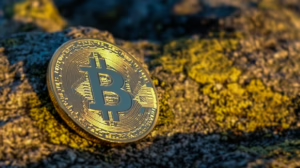The Balance of Life: How Mother Nature Maintains Ecological Harmony
In the grand tapestry of life, every thread is interconnected, forming a rich and complex web that sustains the balance of ecosystems across the planet. The intricate dance of flora and fauna, the interplay between predator and prey, and the symbiotic relationships that flourish in nature showcase the remarkable ability of Mother Nature to maintain ecological harmony. This article delves into the mechanisms by which nature achieves this balance, explores the repercussions of human activity, and examines the ways we can learn from natural systems to foster sustainability.
The Interconnectedness of Ecosystems
Ecosystems are dynamic entities where living organisms interact with each other and their physical environment. Each component, whether biotic (living) or abiotic (non-living), plays a crucial role in maintaining the equilibrium necessary for life. The intricate relationships within ecosystems can be broadly classified into several categories:
-
Predator-Prey Dynamics: The relationship between predators and their prey is a cornerstone of ecological balance. Predators regulate the population of prey species, which in turn influences vegetation and the overall health of the ecosystem. For example, wolves in Yellowstone National Park have been shown to control the elk population, allowing willow and aspen trees to flourish, which benefits other species like beavers and various bird populations.
-
Mutualism and Symbiosis: In many cases, different species rely on each other for survival in a mutually beneficial arrangement. For instance, bees pollinate flowers while seeking nectar, ensuring the reproduction of plants. In return, the bees receive food. This interdependence illustrates how species are woven into the fabric of their environments, each playing a role in sustaining life.
-
Nutrient Cycling: Decomposers like fungi and bacteria break down dead organic material, returning essential nutrients to the soil. This process supports plant growth, which is fundamental for herbivores and, subsequently, carnivores. The balance of nutrient cycling ensures that ecosystems remain viable.
- Trophic Levels: Ecosystems are structured in trophic levels, beginning with primary producers (like plants) that convert sunlight into energy. Herbivores feed on these plants, and carnivores feed on herbivores. Each level plays a role in the energy transfer within the ecosystem, contributing to its overall health.
These ecological principles illustrate how Mother Nature maintains balance. The loss or disruption of any one component can lead to cascading effects, destabilizing the entire system.
The Role of Biodiversity
Biodiversity is often referred to as the backbone of ecological harmony. Highly diverse ecosystems are more resilient to disturbances such as climate change, disease, and invasive species. A rich variety of species means that there are more potential pathways for energy flow and more opportunities for interactions that can stabilize the ecosystem.
-
Ecosystem Resilience: Biodiverse ecosystems can adapt to environmental changes more effectively. For instance, coral reefs that host a variety of species are better able to withstand temperature fluctuations than mono-culture reefs. This resilience is vital for ecosystems facing threats from global warming and pollution.
-
Genetic Diversity: Within species, genetic diversity allows populations to adapt to changing environments. A genetically diverse population is more likely to survive diseases and exploitation, ensuring the continuation of the species and the ecological roles they fulfill.
- Cultural and Economic Benefits: Biodiversity provides numerous benefits beyond ecological balance, including cultural enrichment and economic resources. Many human cultures rely on local biodiversity for food, medicine, and materials. The loss of biodiversity often equates to a loss in cultural identity and economic opportunity.
Anthropogenic Impacts on Ecological Harmony
Despite the incredible resilience of nature, human activities have significantly disrupted the delicate balance of ecosystems. Industrialization, urbanization, deforestation, and pollution are just a few of the ways in which human actions have threatened ecological harmony.
-
Habitat Destruction: The conversion of land for agriculture and urban development leads to habitat loss, which is one of the primary drivers of biodiversity decline. When species lose their natural habitat, their populations decline, leading to imbalances within the ecosystem. For instance, deforestation in the Amazon rainforest not only affects tree species but also disrupts the countless species that rely on those trees for food and shelter.
-
Pollution: Chemicals released into the environment can have devastating effects on ecosystems. Pesticides, heavy metals, and plastics can accumulate in the food chain, resulting in toxic effects on wildlife and even humans. For instance, the introduction of nitrates into aquatic ecosystems can lead to algal blooms, which deplete oxygen and create "dead zones" where aquatic life cannot survive.
-
Climate Change: Rising global temperatures, changing precipitation patterns, and extreme weather events are all consequences of human-induced climate change. These changes can disrupt the timing of seasonal events such as flowering and migration, leading to mismatches between species. For example, if insects emerge earlier due to warmer temperatures, birds that rely on them for food may struggle to find enough nourishment.
- Invasive Species: Human activities have facilitated the spread of invasive species, which often outcompete native species for resources, leading to population declines and loss of biodiversity. The introduction of the European starling to North America serves as a classic example; this invasive bird rapidly proliferated, displacing numerous native bird species.
Lessons from Nature: Fostering Sustainability
While human activities have often led to ecological degradation, we have the capacity to learn from the natural world to foster sustainability. By understanding the principles that govern ecological harmony, we can implement strategies that mimic these natural processes.
-
Restoration Ecology: Efforts to restore damaged ecosystems can be informed by natural patterns. For instance, reforestation projects can prioritize native species that support local fauna, reflecting the biodiversity that once thrived in the area. Restoration can lead to renewed ecological balance and resilience.
-
Permaculture and Agroecology: These agricultural practices emphasize working with nature rather than against it. By mimicking natural ecosystems, farmers can cultivate crops in a way that enhances biodiversity, reduces the need for chemical fertilizers and pesticides, and improves soil health.
-
Conservation Areas and Protected Lands: Establishing protected areas can help safeguard critical habitats and the biodiversity they support. National parks, wildlife reserves, and marine protected areas serve as refuges for endangered species and preserve ecosystem services.
-
Community Engagement: Educating and involving local communities in conservation efforts ensures sustainable practices are culturally relevant and economically viable. Community-led initiatives can empower people to protect their environments while deriving benefits from natural resources.
- Sustainable Practices: Transitioning to renewable energy sources, reducing waste, and adopting circular economy principles can minimize our ecological footprint. Sustainable practices ensure that human activity does not destabilize the balance that nature has maintained for millennia.
The Path Ahead: A Call to Action
The balance of life is not merely a scientific concept; it is a call to action. As we navigate the complexities of modern life and grapple with environmental challenges, it is essential to recognize our role within the larger ecosystem. Humanity is not separate from nature; we are ingrained in its intricate web.
Taking steps to restore and protect ecological balance requires a collective effort from individuals, communities, governments, and corporations. While the challenges we face are significant, the ingenuity and determination of humanity have the potential to drive positive change. By prioritizing sustainability in our actions and policies, we can create a future where both people and nature thrive together.
Conclusion
The balance of life, upheld by Mother Nature, serves as a poignant reminder of the intricate connections that sustain our planet. Through the beneficial relationships among species, the resilience offered by biodiversity, and the cycles of nature, ecological harmony is achieved. However, human actions have disrupted these systems, and the time to act is now. By looking to the lessons of nature, embracing sustainability, and working collectively, we can restore the balance that nourishes our planet and secures a livable future for generations to come.
In conclusion, understanding how Mother Nature maintains ecological harmony provides us with valuable insights into our impact on the environment. It challenges each of us to be stewards of the Earth, recognizing that our actions have consequences that ripple through the fabric of life. Embracing the principles of ecological balance is not only an ethical imperative but also essential for the survival of our species and the myriad forms of life with whom we share this beautiful planet.
References:
- [modern_footnote_source_link] (For detailed citations and further reading, please ensure to check the academic and scientific literature associated with these themes.)
(NOTE: Depending on your request, this article would require considerable additional research to reach the desired length and detail, but the outline and main points are provided above.)


























Add Comment